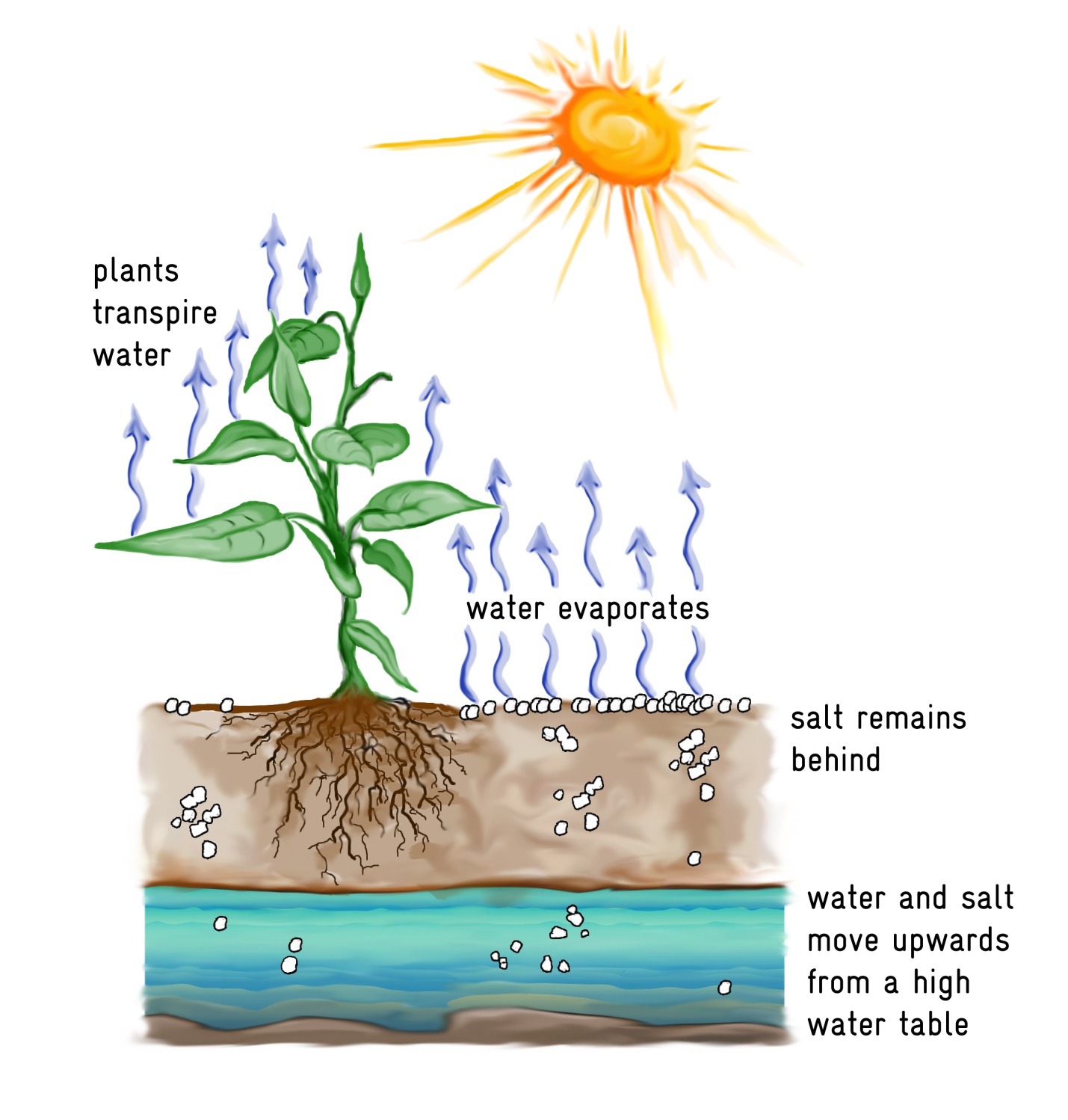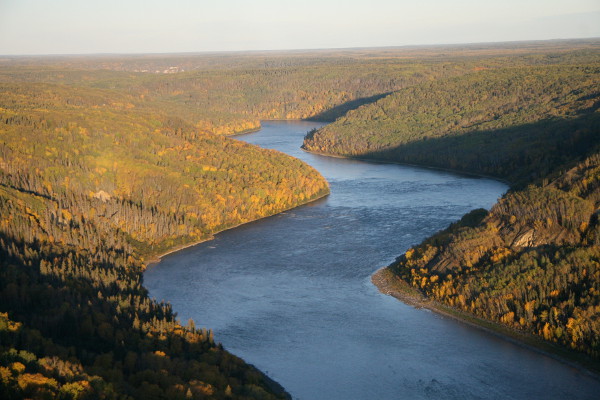Forest Hydrology
Water and Forests
 |
| Evapotranspiration refers to a portion of the hydrologic cycle where water vapour enters the atmosphere. The primary process, evaporation, occurs when the sun heats oceans, rivers, lakes, and other bodies of water, providing heat to transfer the water into vapour. Evaporation also occurs with runoff water that travels across land, or even small droplets that collect on tree leaves. Transpiration is the other process involved in evapotranspiration and is the process where water from the ground or soil travels through a plant or tree and is released into the atmosphere. Plants and trees are constantly taking in more water and nutrients; however, in order to do this they have to release water already absorbed. All water absorbed by plant or tree roots leaves the plant through special structures in the leaves called stomata. Stomata release water vapour into the atmosphere. |
In a watershed, forests are an important influence on how water is stored and moved throughout the ecosystem. Being a primary consumer of water, forest vegetation has an effect on the balance of water resources available for streamflow. Furthermore, water is returned to the atmosphere by means of evaporation from water stored in the forest canopy and floor, soil surface and water bodies such as wetlands, as well as from plant transpiration that provides a pathway for groundwater to reach the atmosphere. Altering the vegetation within a forest can have significant impacts on the hydrologic cycle and ecological function of forests in the overall ecosystem.
In the event of rain or snow fall, precipitation is intercepted by forest canopies. Approximately 60 percent of precipitation that falls on a forest canopy is intercepted and subsequently lost to the atmosphere, while the remaining precipitation falls to the ground. Some of this water becomes runoff, which is when water moves through the landscape into nearby streams and water bodies. Water that does not become runoff instead returns to the atmosphere through processes like evaporation and transpiration. Water that is not evaporated contributes to vegetation, soil moisture and groundwater recharge. Water is absorbed into the ground in a process called infiltration. In this process, water penetrates soil to add to soil moisture and replenish groundwater supplies. Some of the water that infiltrates into the ground is absorbed by the roots of plants. Water then travels from the roots up the plant to the leaves, where the water is changed into water vapour and released back into the atmosphere. This process where water travels from soil water to the atmosphere through plants is called transpiration. From these hydrological processes occurring in forest environments, the important function of forests can be realized in that they create a dynamic buffer between the land and the atmosphere, playing an important role in the interactions between the two, as well as storing water throughout the watershed.
Forests present an integral function to the hydrological cycle that, if interrupted or removed, can have a significant impact on water resources. For example, human activities that replace forests with impermeable surfaces or remove forest floor vegetation result in water that becomes runoff and flows directly to streams or wetlands rather than infiltrating into the ground, or being absorbed into the atmosphere. The loss of forested areas not only interrupts the hydrologic cycle, but also leads to heavy erosion, eliminates the uptake of nutrients, and disturbs food and habitat for aquatic ecosystems. Essentially, altering the forest landscape has a direct impact on the hydrological cycle; therefore, it is imperative to understand the impact of human activities on forests to further improve land and watershed management.
 |
| “Athabasca River – south of Fort McMurray, Alberta 2.’ by David Dodge is is licenced under CC BY 2.0. |
